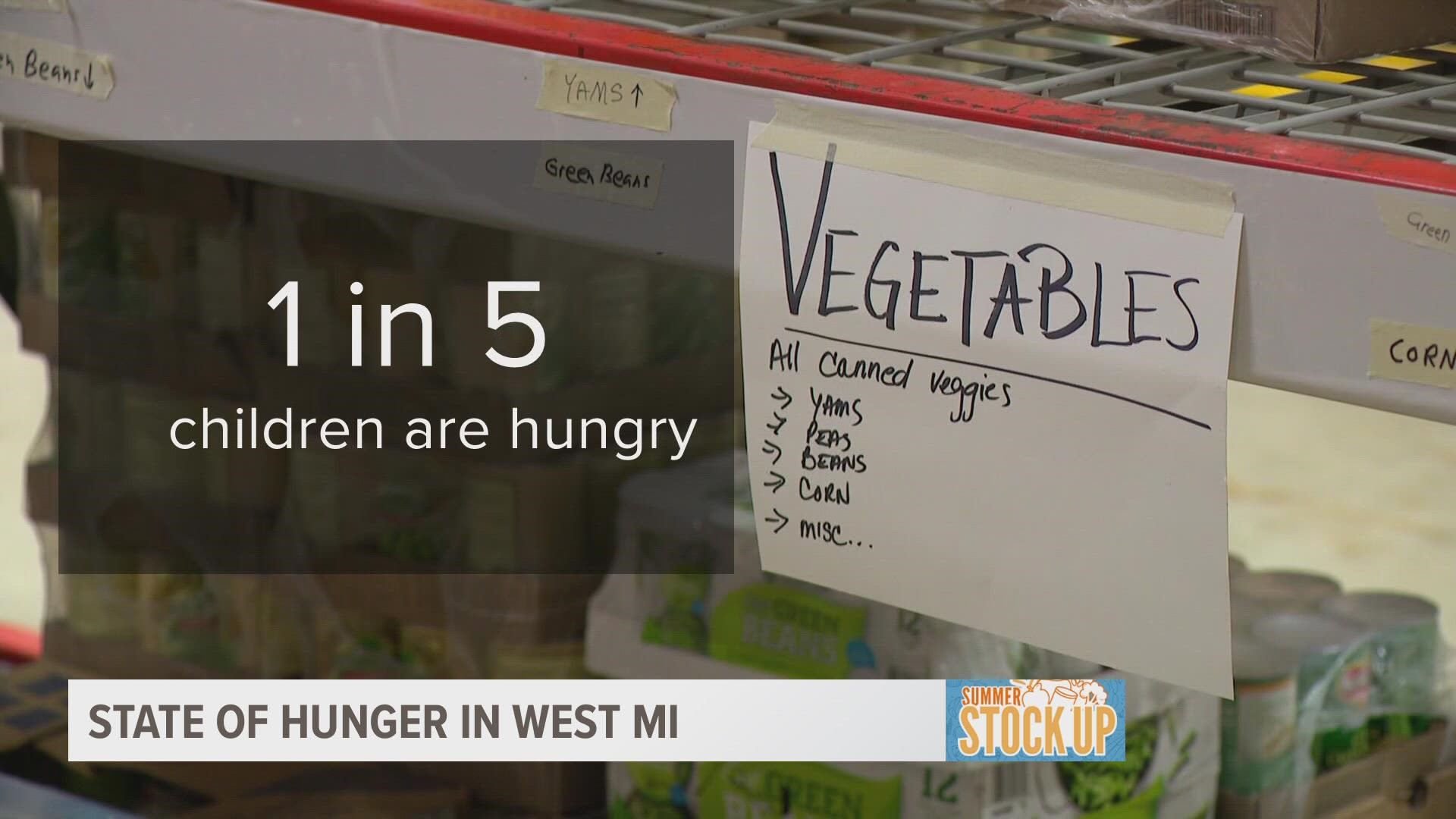GRAND RAPIDS, Mich — With rising costs in everything from fuel to food, it can be difficult for many families to put dinner on the table.
In fact, in West Michigan, one in eight people are hungry. In children, that number is even higher, at one in five. That's according to the Heart of West Michigan United Way.
In the summer, 20% more people rely on food pantries between June and August.
"When school lets out, these neighbors have fewer resources to feed their families," said Michelle Van Dyke, President and CEO of Heart of West Michigan United Way.
To keep pantry shelves full, 13 ON YOUR SIDE has partnered with the United Way for the Summer Stock Up. Starting June 13 and lasting through June 23, you can help fill pantries by donating food, cash or both.
On June 22 and June 23, 13 ON YOUR SIDE will host a drive-through dash, collecting the shelf-stable food items with a big truck in our parking lot.
Van Dyke said the need is even greater this year.
"With the rising cost of food and the inflation, more families have to visit food pantries to supplement their grocery shopping for the week or for the month," said Van Dyke, "Simply because it's too expensive for them to be able to buy food at the grocery store today."
Van Dyke said to be "hungry" means a person has a lack of access to food. Often times, it's a transportation issue. Some people live too far away from a grocery store with access to fresh, nutritional food. Other times, many people are working but not making enough income to pay the rent, buy gasoline, pay for childcare and more, plus purchase food.
The pandemic the past few years has made the situation more relevant.
"We were talking to families who were going days without being able to feed their children, they were desperate to be able to find food," said Van Dyke, "And we're seeing that again now. We're out of the pandemic, or we don't have the stay at home orders. But the rising food prices are causing the same kinds of feelings for these neighbors that we have. And we have to help them."
The United Way commissions the ALICE Report. It takes a look at the minimum income a family needs to survive. It is a higher threshold than the federal poverty line, but it takes into consideration more factors such as local rent prices, food prices, child care and more.
"Almost 30% of households in Kent County are ALICE," said Van Dyke, "They're working, but they're struggling to make ends meet."
10% more families fall below the ALICE threshold and not working.
RELATED VIDEO: Food drives, cooking programs working to fight food insecurity
►Make it easy to keep up to date with more stories like this. Download the 13 ON YOUR SIDE app now.
Have a news tip? Email news@13onyourside.com, visit our Facebook page or Twitter. Subscribe to our YouTube channel.

